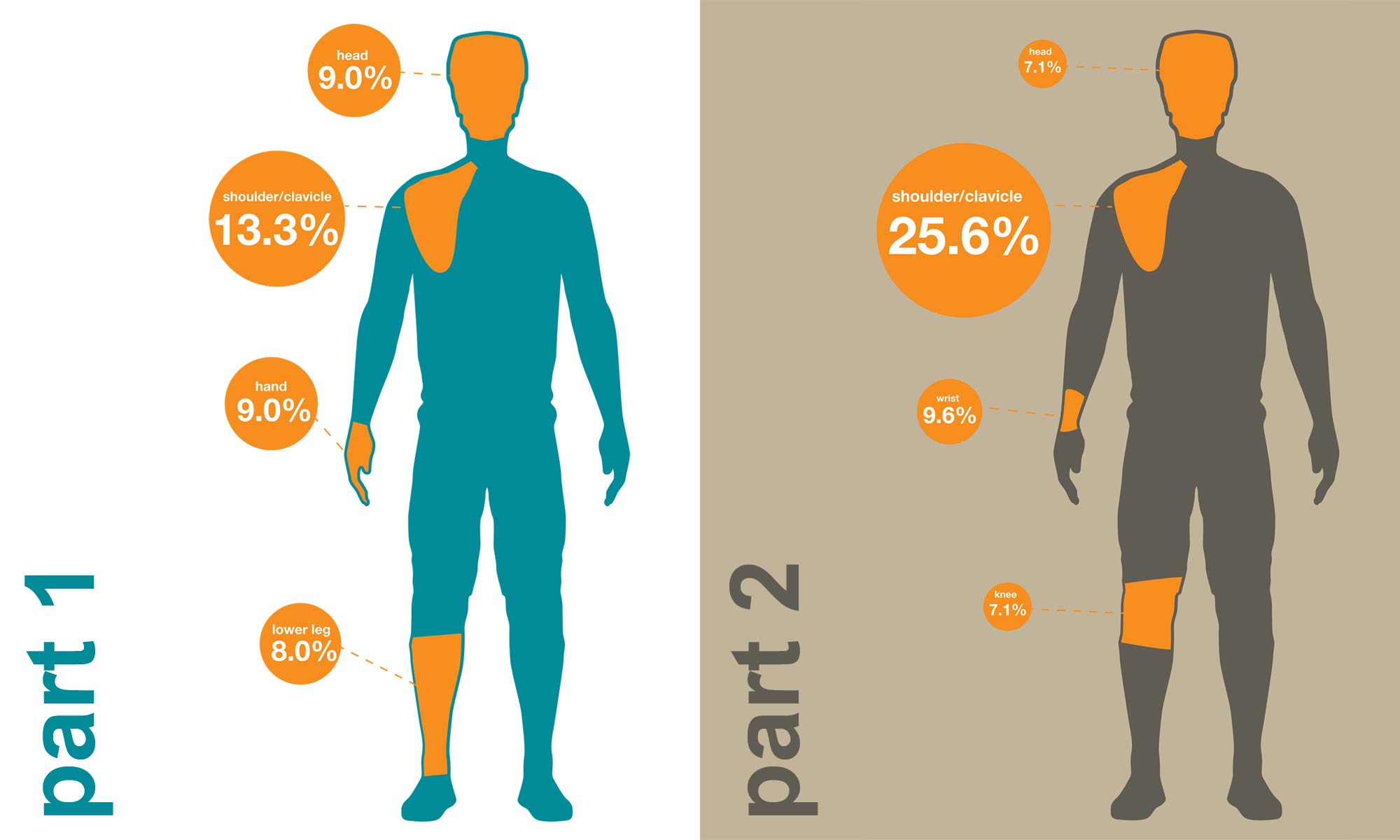The Enduro World Series spent three years studying the health & safety impacts of mountain biking on its athletes, and now present a comprehensive medical study offering their findings & recommendation. Not only applicable to enduro, the study gives an overall look at the real injuries & concussion risk facing all mountain bikers, and how to deal with those risks…
EWS Enduro Mountain Bike Medical Study

Likely the largest medical study ever to specifically address mountain biking, EWS utilized their enduro race format to take a focused look at the real injuries & risks that face all mountain bikers across all disciplines. One part of their study looked exclusively at how & why athletes were injured during EWS race events, while the other was a broad survey of the injuries that have impacted mountain bikers from all backgrounds and all skill levels, in & out of competition.
Overall the findings show that in the course of two full 10-race EWS seasons, 9% (or 1 of 11) of all athletes were actually injured as a part of racing the EWS. While that sounds like a lot, for comparison 24% of all MTB athletes competing at the Rio Olympics were injured during the summer games alone. When you look at the actual rate of injuries per race, and the days lost per injury, the EWS stacks up quite favorably relative to other sports. Not surprisingly there were a lot of shoulder and/or collarbone injuries. But presumably due to the good protection offer by helmets, the rate of race event concussions was deemed to be low, and with mild severity. Of course, we all spend more time riding outside of races, so it is also important to employ injury prevention (& caution) outside of competition.
The study reached conclusions recommending better communication about concussions. Although they are relatively rare, mountain bikers (especially amateur, and those outside of competition) in general did not always get proper treatment or follow-up care for head injuries, nor did they always heed accepted advice to take time off the bike post-concussion. EWS also suggest a need to look deeper at preventing those common shoulder injuries.
The report of the EWS MTB medical study is an easy-to-read dozen pages or so with simple graphics, so it’s worth pretty much every mountain biker to take a few minutes and go all the way through it. You can download the full PDF here. The research itself was completed by Dr. Debbie Palmer at Edinburgh Napier University in Scotland. It was funded by the Enduro World Series who used their own membership fees to support the study. That sounds like one of the most worthwhile applications of start fees I have seen, and we suggest all bikers take a look at the study and share it with your riding buddies.



